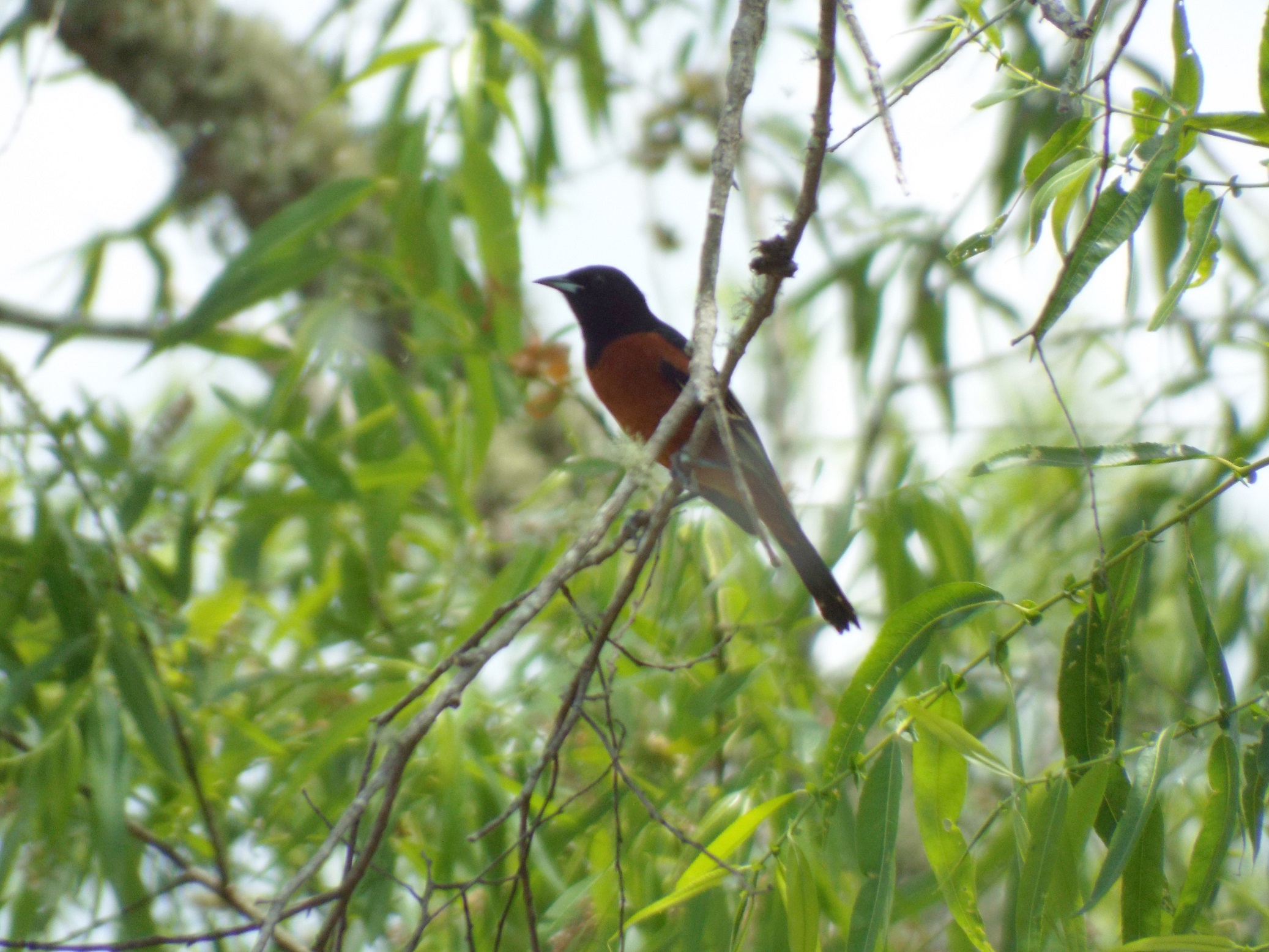
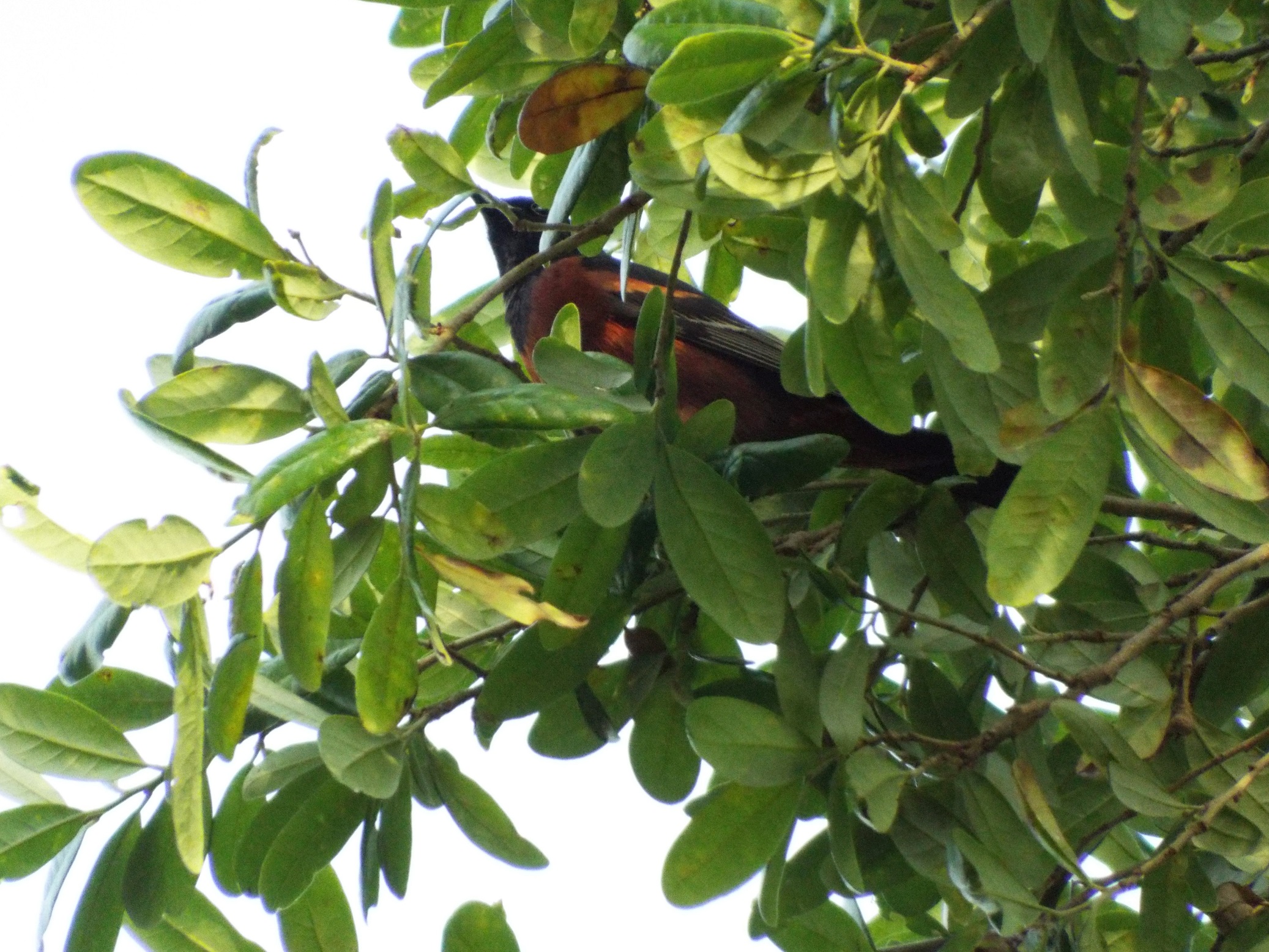
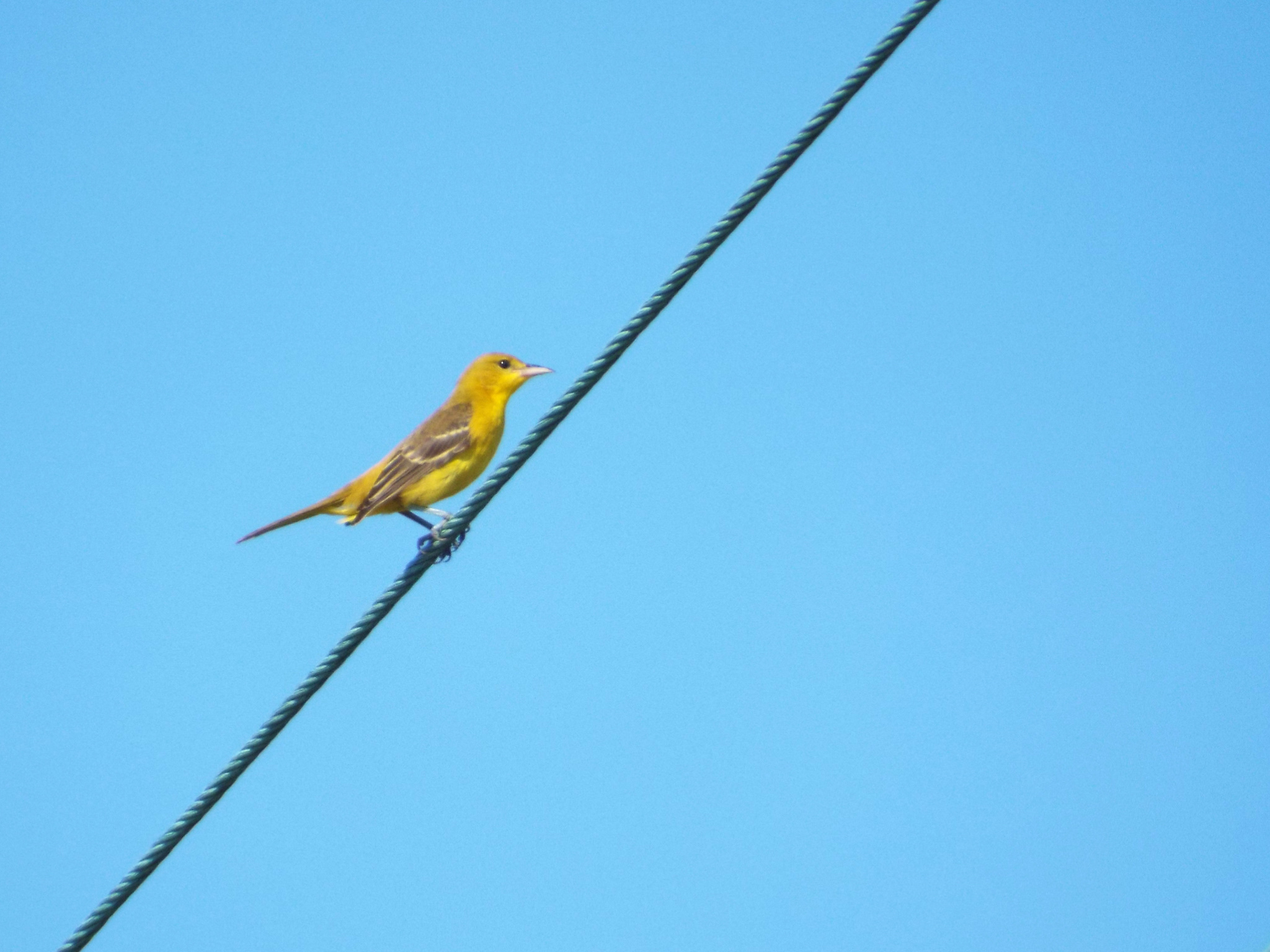
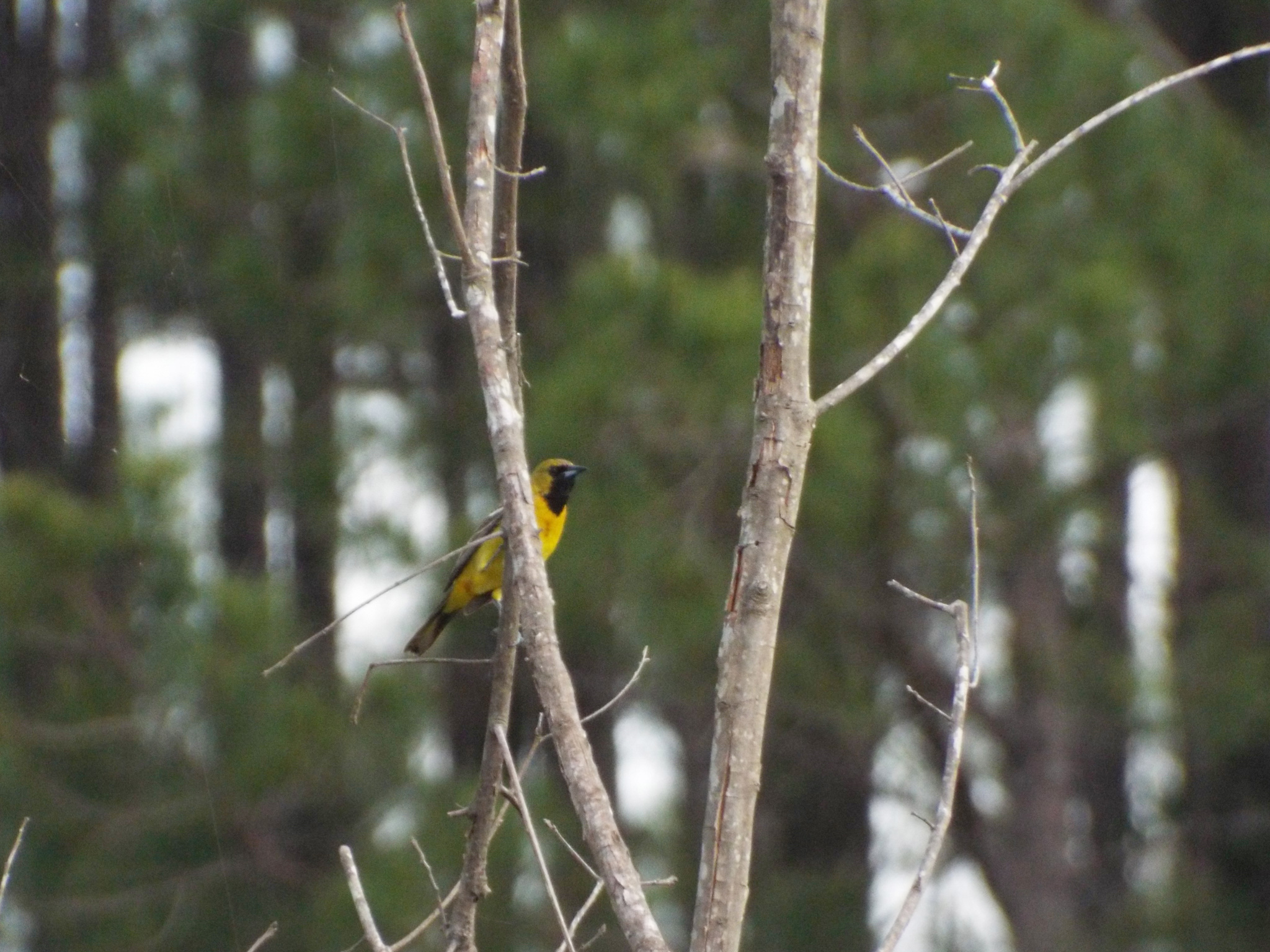

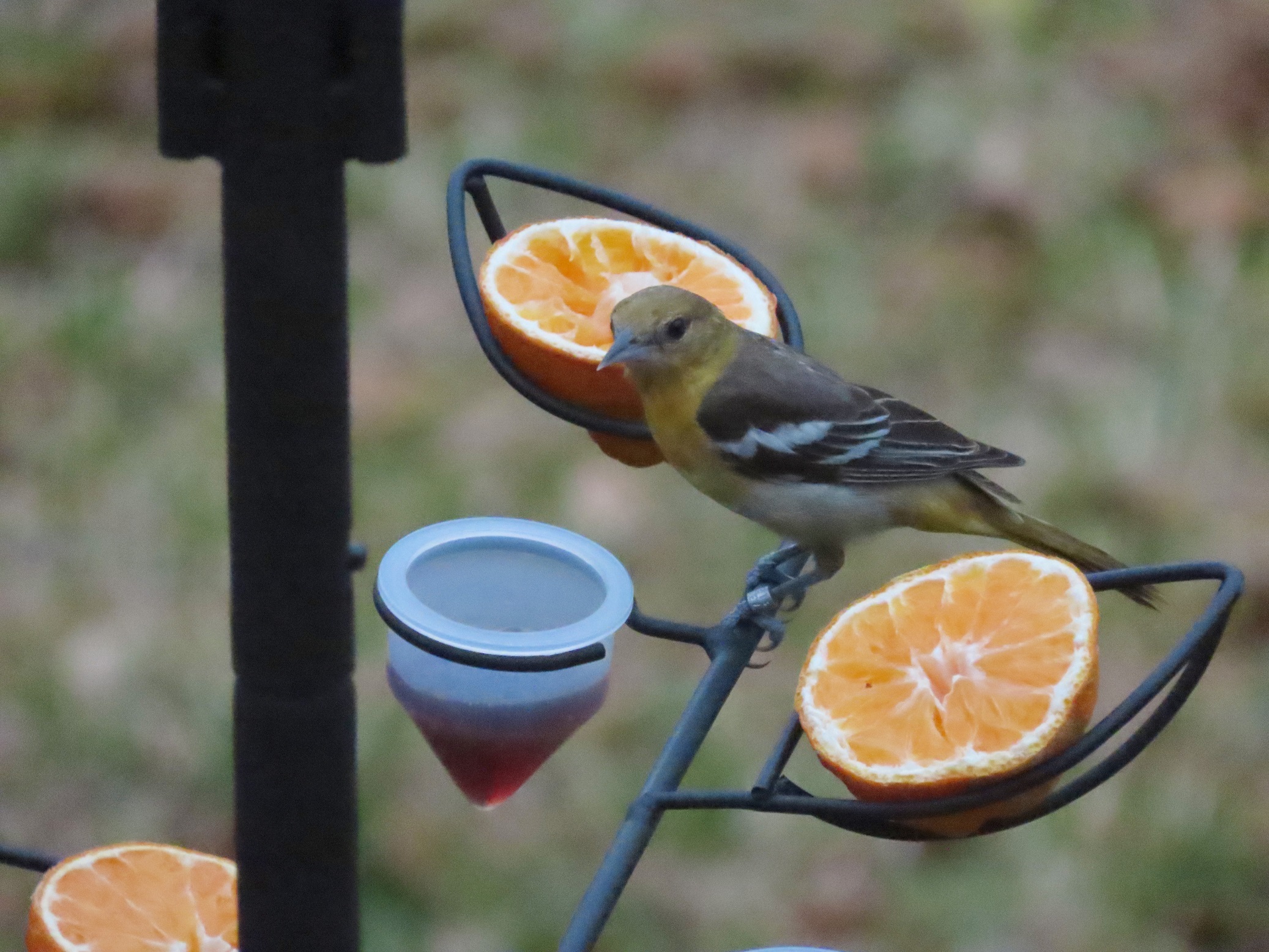
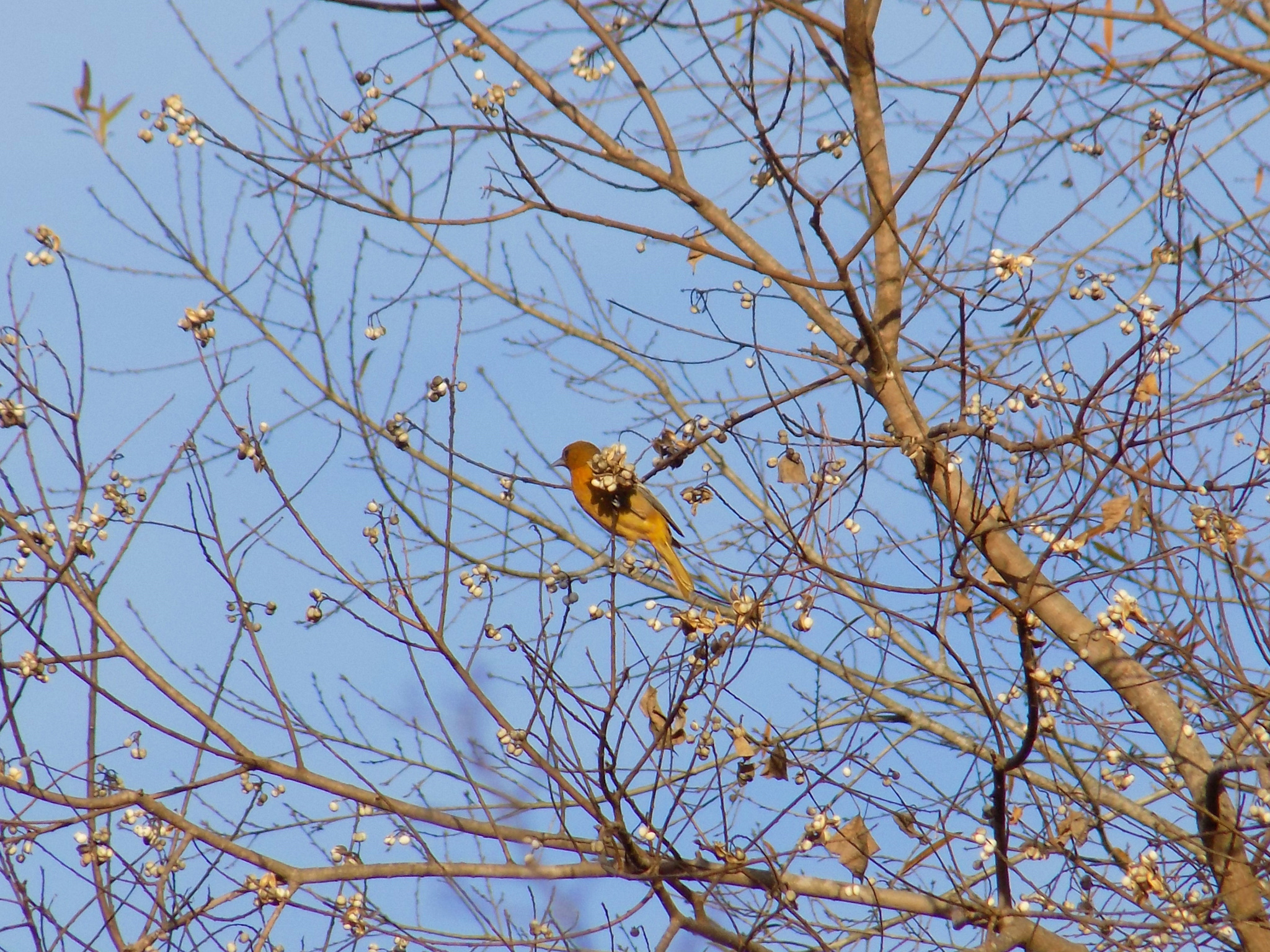
This week for Flora and Fauna Friday we’re keeping an eye out for a radiant pair of fruit-loving birds, the Orioles, genus Icterus.
Here in South Carolina, we have two species of Oriole, the Orchard Oriole (Icterus spurius) and the Baltimore Oriole (Icterus galbula). Orioles belong to the Blackbird family Icteridae, alongside Grackles, Meadowlarks, Cowbirds, Bobolinks, and, of course, Blackbirds. Orioles share many of this family’s more common features including a sharp bill and deep black feathers accented by a shade of red, orange, or yellow. The root of the family name Icteridae means “jaundiced” in reference to the prevalence of yellow and orange plumage in many Blackbird species. Both of our Oriole species can be found across much of the Eastern United States and throughout all of South Carolina. Yet their presences here in the Lowcountry alternate with the seasons. Orchard Orioles suffer alongside us during our sweltering summers and Baltimore Orioles linger here for our mild winters.
The Orchard Oriole is small for an Icterid, with an overall size similar to a Brown-headed Cowbird but erring smaller with a slim, streamlined build. Their bill is sharp with a slight decurve. The male’s plumage is jet-black contrasted by a rich cinnamon-brown on the back, breast, and belly. Females are chartreuse-yellow across the body with black-gray wings. Immature males look much the same as females but with a black beard. Orchard Orioles nest in South Carolina and can be found here from spring into fall. Their song is a complex warble of disjointed notes that, to the ear, seems to follow no rhyme nor reason, changing pitch and character every note. They prefer habitats with a mix of open land and hardwood trees. Field edges, neighborhoods, savanna margins, and their namesake orchards are common haunts for Orchard Orioles. Yet they aren’t particularly abundant on our landscape and this Oriole can be a difficult bird to pin down in the Lowcountry.
The Baltimore Oriole is a larger bird, growing to a size somewhere between Cowbird and Red-winged Blackbird. Their bill is longish, sharp, and with a narrow triangular shape. The male possesses a jet-black head and mantle extending down to black wings streaked with white. His belly and breast are dyed a rich saffron-yellow bordering on orange. Females have a similar plumage but are muted somewhat in color and with a golden-khaki head instead of black. Their song is a strikingly musical verse of whistled notes, distinct and flute-like, cutting through the other birds’ chatter to the forefront of the soundscape; the same way an unanticipated Jethro Tull flute solo on the local classic rock station breaks its way into your absentminded consciousness. Baltimore Orioles are only in South Carolina for the fall and winter, arriving with fall migration and departing in spring to nest up north. Their favorite habitats are river margins, open hardwood forests, forest edges, and suburbs.
Orioles subsist off of a diet of mainly insects, especially in the warming months. They’ll also sip nectar from large flowers, eat small berries, and pick at larger fruits. The Orchard Oriole, only being here for the warmer months, doesn’t eat a whole lot of fruit in the Southeast. The Baltimore Oriole on the other hand has quite the sweet tooth. They regularly winter around residences, suburbs, and urban forests whose scattered trees and brushy wooded margins mimic their natural habitats and provide an abundance of small fruits throughout winter. Here on the Sea Islands, there’s often an overladen citrus tree in every neighborhood for them to visit as well. They’ll even sneak sips from Hummingbird feeders! If you’d like to lay eyes on a Baltimore Oriole, they can be attracted to yards with cut fresh fruit skewered on branches and with fruit jelly feeders.
The South Carolina Department of Natural Resources would also like to see those Baltimore Orioles! Every February SCDNR conducts the Baltimore Oriole Winter Survey on the same weekend as the Great Backyard Bird Count (GBBC). For 2025 that weekend is February 14th through 17th. Most of the Baltimore Oriole population migrates to the tropics for winter but, over the last few decades, a group of Orioles started calling the Charleston area home. Ornithologists noticed this shift and started looking into it. In 2015, SCDNR started a public survey for Orioles in winter and the results were surprising. The Baltimore Oriole presence in the Lowcountry has been growing ever since. Currently, South Carolina boasts the largest population of overwintering Baltimore Orioles in the United States!
To help SCDNR with their survey, simply count the highest number of Baltimore Orioles you can see at one time, each day of the count, and report those numbers online, either through the SCDNR website or through eBird. (You can get more technical with data collection too if you want.) If you submit your Oriole observations through eBird, you’ll be able to report other bird species and simultaneously participate in the GBBC.
So go look at your window and count some birds!
Learn more about SCDNR’s Baltimore Oriole Winter Survey:
https://survey123.arcgis.com/share/67f948fa5f3e4243bdb72073346013f2
You can learn more about how to participate in the Great Backyard Bird Count at: https://www.birdcount.org/
-Tom A.